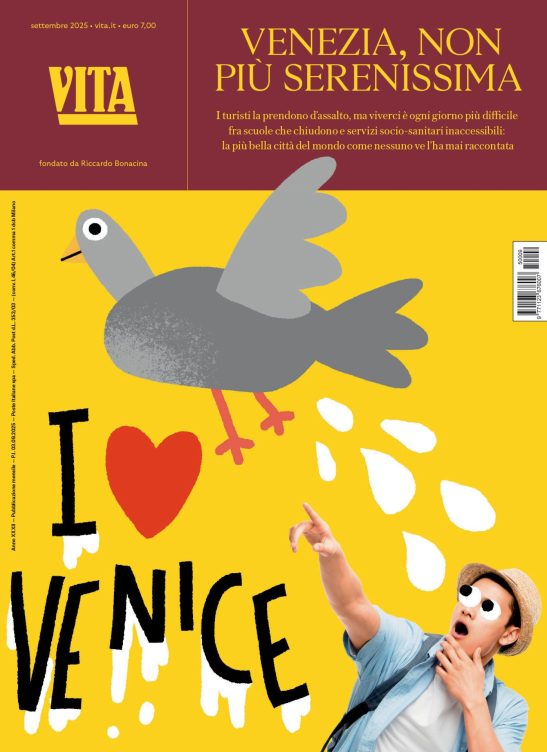Mondo
Poland: Non profits have mixed feelings over the 1% tax donation mechanism
The government has changed its 1% tax donation mechanism following the 2006 flop in taxpayer support. But the debate over the mechanism's pros and cons has not been dampened
Debates over the ?1 % tax assignation mechanism? in Poland have not been dampened despite recent government action to increase the transparency of the operation and to make the assignation easier for donors to perform.
How the 1% mechanism works
In 2003 an act on Public benefit activity and volunteer work was passed in Poland that enabled organizations that met certain criteria to receive the status of public benefit organization. According to the same Act this status would allow the organizations to receive up to 1% of an individual?s tax liabilities every year as the Act (and accompanying regulations on individual income taxes) says that Polish citizens who pay individual (not corporate) taxes can designate 1% of the taxes they owe the government to a public benefit organization of their choice instead of to a government tax agency.
The 1% flop
Despite the fact that 2006 was the third fiscal year that Polish tax-payers were able to use the 1% mechanism to support nonprofit organizations only 4.85% of them did so.
The experts claimed that it was the very procedure required to designate this 1% that discouraged many individuals from using it. According to regulations, citizens had to pay the money to the organizations first, and only later deduct this amount from the sum owed to a government tax office when they filled in their tax returns.
Another discouraging factor was the risk of miscalculating the amount of taxes owed to the government ? such a mistake would skew the 1% calculation meaning that donors risked giving organizations more than what they would be reimbursed.
New 1% regulations
In 2007 the Polish government, after taking note of these problems, changed the 1% allocation procedures. Tax-payers are no longer obliged to transfer an estimated 1% of their tax liabilities to the organizations themselves in advance and wait for tax office approval and can now simply point out which organization they wish to support when they fill out their tax forms. It is up to the tax office to calculate the 1% and transfer the money to selected organizations.
The debate: welcome changes or broken bonds?
Many of the organizations that had complained about the previous arrangements have welcomed the changes in regulations with much satisfaction. Others have started pointing out the disadvantages of the new procedure claiming that although they are much less complicated, they break the bonds between the organizations and the tax-payers who decided to support them with their 1%.
The new regulations, in fact, mean that organizations will receive a single transfer from all tax-payers. Some organizations complain that this way they will not be able to recognize their supporters or to send them thank-you letters to encourage them to support their organizations the next year as well.
What is more, the new regulations do not enable citizens to support a particular cause or program, as they cannot choose which projects within organizations they specifically want to support . Some organizations claim that certain tax-payers will not want to pay their 1% to them if they do not know what their money will be spent on.
Among those most concerned were the parents of severely ill children who had convinced several foundations to collect 1% donations to go towards treatment or expensive operations for their children. The new regulations mean that it will no longer be possible for the foundation to know how much of their total donation should go to these causes, meaning an end to such practices.
The debate within the debate
A number of organizations have voiced the opinion that taxpayers should not be able to designate 1% of their tax liabilities to particular individuals and this argument is especially expressed by the members of the Council of Public Benefit Activity (a body consisting of ten democratically chosen non profit sector representatives who consult the government on nonprofit issues). They claim that the idea of 1% was to support causes of public benefit, not private ones.
The government rectifies, but will this bring an end to debate?
Nevertheless, the Ministry of Finances, not wanting to be accused of being indifferent to poor and suffering ill children, and under pressure from many MP?s s and Ombudsmen, decided after Christmas to rectify the procedure once again even though the costs that tax offices will have to incur will be greatly increased. Now, citizens will be able to indicate in their tax return forms which cause or even person they want to support with their 1%. But critics have already voiced their opinions: what will happen if the taxpayers choose to support only individuals? Will this mean that non profit organizations will no longer have the funds to support those who do not have enough connections to make it onto the list? It seems that the debates over purposes and procedures of 1% mechanism are likely to continue?
More info:
Vuoi accedere all'archivio di VITA?
Con un abbonamento annuale potrai sfogliare più di 50 numeri del nostro magazine, da gennaio 2020 ad oggi: ogni numero una storia sempre attuale. Oltre a tutti i contenuti extra come le newsletter tematiche, i podcast, le infografiche e gli approfondimenti.
